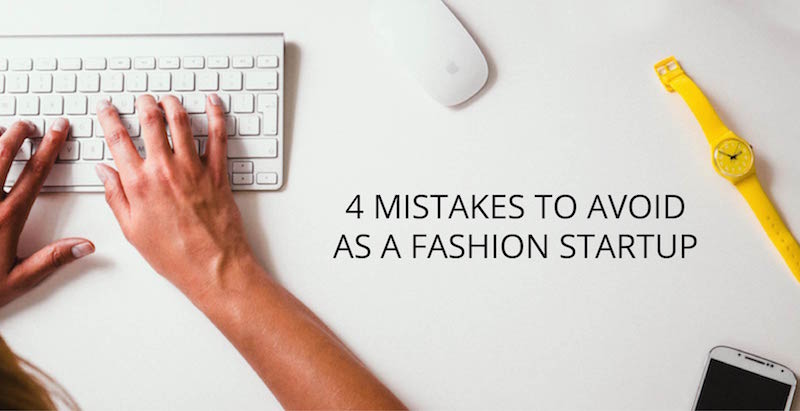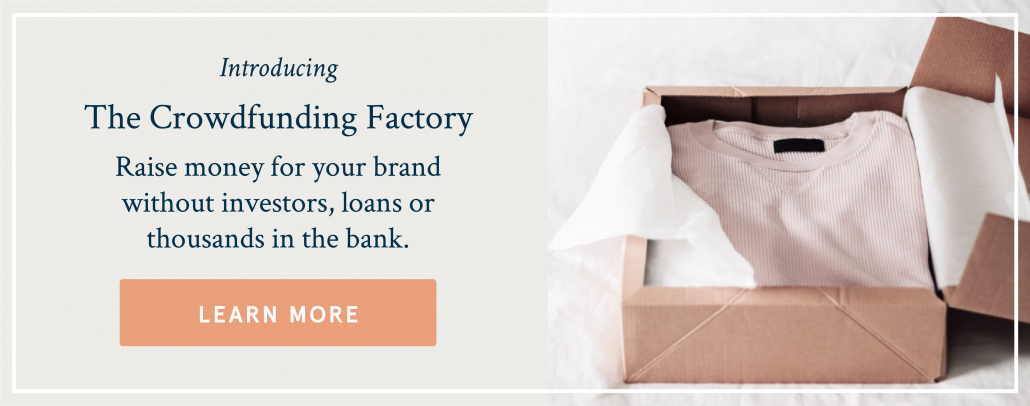Are You Making One of These Fashion Startup Mistakes?
Over the past two years, I’ve worked with over a hundred fashion startups at various stages of business development.
While there are many, many things I’ve observed and learned in that time, there are four big ‘things’ I want to go over today that have the potential to directly affect the success — or downfall — of your company.
Whether you’re already selling product or only have an idea down on paper, keep these big four tucked somewhere in the back of your brain:
Mistake #1: Focusing on sustainability as a marketing tactic instead of making it an inherent part of your business model.
We all love to think the “do-gooder” angle sells, but studies are showing that’s not the case. The product — meaning the usability, functionality, and design — must always sell first. Not only that, but it must sell at a price point your target market will respond to. Supporting roles like branding, social responsibility, and packaging are important, but they’ll never have the same effect on a potential buyer as a really great product.
Taking that a step further, sustainability and ethics should be embedded into your business model as a non-negotiable, not a strategy for saying: “Aren’t we so great?”
I can’t wait for the day when all companies big and small can say, “Well yeah, of course our company manufacturers ethically and transparently” — but even now, that can’t be your main selling point.
Mistake #2: Giving away a percentage of your revenue to charities and non-profits in the first three years of being in business.
This argument isn’t going to win me any popularity points, but hear me out.
There should absolutely be a social impact component of your business, but when you’re first getting started, you need every penny to keep growing. If low-impact materials, domestic job creation, above-average wages and ethical sourcing practices are embedded into your supply chain, then the best thing you can do is invest every cent back into your business so that it doesn’t fail.
I remember when TOM’s first launched in 2006 and everyone was going bonkers over the one-to-one model. Consumers and the media were heralding its social impact without considering where the shoes were actually being made. Meanwhile, the materials were so cheap that the shoes were falling apart after a few wears. (And that was just one of its many problems.)
You ultimately have to decide on the values of your business, but if you’re bleeding cash and can’t continue to give your sewers work, then that doesn’t benefit anyone. Instate a “give-back” component when your company is stable and there is money in the bank.
Which brings me to…
Mistake #3: Not paying attention to cash flow.
You have to have your financial ducks in a row in order to run a successful business that will continue to grow.
My advice is to price your products as high as your target market will tolerate, so that your margin is wide enough to cover expenses — and more. Similar to saving for your personal bank account, you never know when a crisis is going to come up. It’s smart to start building a buffer of cash as soon as possible.
That’s all to say, one of the best things I ever did for my business was hire an accountant. Find someone who offers tiered pricing that correlates with your annual revenue, so it’s not a huge upfront expense. (Shout out to Jerod.)
Mistake #4: Not listening to your customer.
Your customer is more valuable than any other component of your business.
If you ask and listen, then they will tell you what you need to succeed. Don’t be so in love with your original idea that you’re blinded by ways to improve it. Your customer will tell you what they really want, but you need to be smart enough to ask and listen.
I’ll leave you with an example. As some of you already know, my fiancè Ross runs an e-commerce company called Project Repat.
When he was first getting started in 2011 he was traveling to Kenya and working with the second-hand sellers who sell the old t-shirts we donate to GoodWill (yep, that’s where most of our donations end up).
Ross’ idea was to buy those shirts in bulk, upcycle them into “cooler” shirts and tote bags and “repatriate” them by selling them back to “hipster” customers in the States.
Bear with me here.
As he started selling the t-shirts and gaining some attention, he kept hearing the same thing over and over:
“This is cool and all, but what can you do with my shirts?”
Hearing this enough times, Ross and his business partner started listening. They flipped their business model entirely.
Four years later, they now run a 4 million dollar company that takes people’s memorable t-shirts and turns them into t-shirt quilts.
All of their production happens in the U.S. where their sewers are paid a fair and living wage. If Ross had been so in love with the idea of traveling to Kenya and creating international impact, he wouldn’t have heard the needs of his customers.
He likely wouldn’t have created a successful business.
The best thing you can build with you customer is a two-way conversation.




